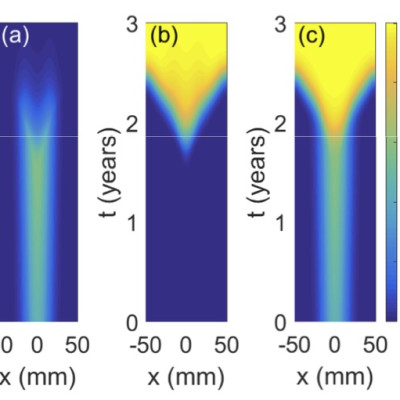Publication
A Mathematical Model Describes the Malignant Transformation of Low Grade Gliomas: Prognostic implications
M.U. Bogdanska, M. Bodnar, M.J. Piotrowska, M. Murek, P. Schucht, J. Beck, A. Martínez-González, V.M. Pérez-García
PLOS One 12(8):e0179999 (2017)

MOLAB authors
Abstract
Gliomas are the most frequent type of primary brain tumour. Low grade gliomas (LGGs, WHO grade II gliomas) may grow very slowly for long periods of time,
however they inevitably cause death due to the phenomenon known as the malignant transformation. This refers to the transition of LGGs to more aggressive forms of high grade gliomas (HGGs, WHO grade III and IV gliomas). The main purpose of this paper is to propose a mathematical model describing the spatio-temporal evolution of LGGs into HGGs. Our modelling approach is based on two cellular populations with transitions between them being driven by the tumour’s microenvironment transformation occurring when the tumour cell density grows beyond a critical level. We find out that the model describes well real patients’ data. We discuss the relationship between patient prognosis and model parameters and propose estimates describing tumour evolution up to the onset of malignant transformation.














